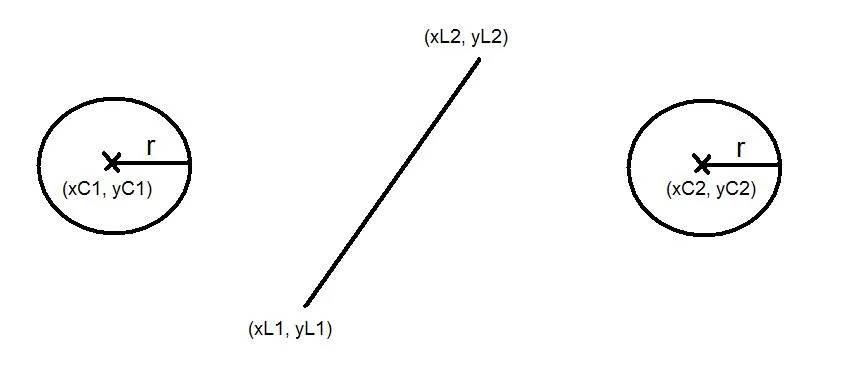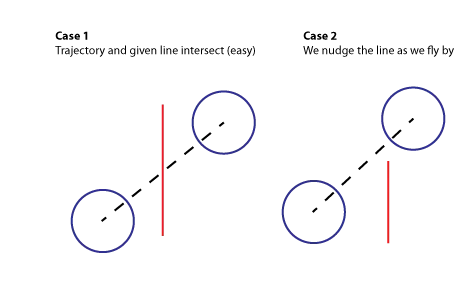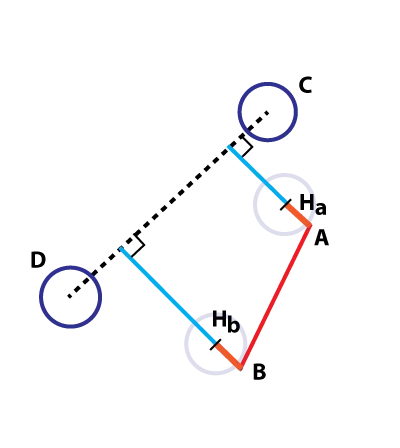在游戏程序的背景下,我有一个移动的圆和一条固定的线段。该线段可以具有任意大小和方向。
- 我知道圆的半径:r
- 我知道移动前圆的坐标:(xC1,yC1)
- 我知道移动后圆的坐标:(xC2,yC2)
- 我知道线段端点的坐标:(xL1,yL1) - (xL2,yL2)

计算时,我遇到了困难:
- 一个布尔值:如果圆在从(xC1,yC1)移动到(xC2,yC2)的过程中击中线段的任何部分
- 如果布尔值为真,则是圆第一次与线段相切时的圆心坐标(x,y)

